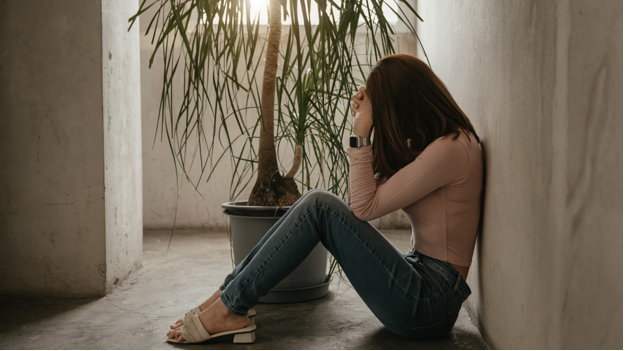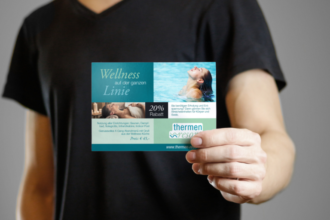When anxiety feels overwhelming, finding healthy ways to process emotions can feel impossible. Traditional coping methods don’t always work for everyone, and sometimes we need approaches that tap into our natural creativity.
A 2016 study measured cortisol levels before and after art-making and found that 75% of participants experienced a significant decrease in stress. This remarkable finding shows just how powerful creative expression can be for emotional well-being. Creative journaling offers a unique pathway to explore feelings, reduce anxiety symptoms, and support healing during challenging times.
Implementing Creative Journaling in Mental Health Treatment
Creative journaling can be a valuable complement to professional anxiety treatment approaches. Many therapists and counselors now recognize the therapeutic potential of creative expression and encourage clients to explore these techniques alongside traditional therapy methods.
Working with Healthcare Professionals
While creative journaling can be practiced independently, discussing it with your healthcare provider can enhance its effectiveness. Therapists specializing in Generalized Anxiety Disorder treatment often incorporate creative techniques into their sessions, helping clients develop personalized approaches to emotional expression.
Some mental health professionals use art therapy principles in their practice, guiding clients through specific creative exercises designed to process trauma, reduce anxiety, and build emotional resilience. They might suggest particular prompts or techniques based on your individual needs and treatment goals.
Daily Practice and Routine Building
Consistency is key to experiencing the full benefits of journaling. Establishing a regular practice, even if it’s just 10-15 minutes daily, can create significant positive changes in your emotional well-being. The routine itself becomes a form of self-care, providing a reliable outlet for processing daily stresses and emotions.
Many people find that morning journaling helps set a positive tone for the day, while evening sessions can help process the day’s experiences and prepare for restful sleep. The timing matters less than the consistency of your practice.
Understanding Creative Journaling for Emotional Expression
Creative journaling goes beyond traditional diary writing by incorporating visual elements, artistic techniques, and imaginative approaches to processing thoughts and feelings. This practice combines written reflection with drawing, collaging, color, and other creative elements to help people express emotions in ways that words alone can’t capture.
What Makes Creative Journaling Different
Unlike standard journaling, creative approaches don’t rely solely on verbal expression. You might sketch your feelings, create color maps of your emotions, or combine photography with written reflections. This multi-sensory approach can be particularly helpful for people who struggle to articulate complex feelings or find traditional writing intimidating.
The beauty of this practice lies in its flexibility. There’s no right or wrong way to approach creative journaling. Some people prefer watercolor washes to represent their moods, while others might use collage techniques or simple doodles alongside their writing. The key is finding what feels authentic and healing for you.
The Science Behind Emotional Release
When we engage in creative activities, our brains process emotions differently than through verbal expression alone. The act of creating activates multiple neural pathways, helping us access and release feelings that might otherwise remain stuck. This is particularly valuable during anxiety treatment, where emotions can feel overwhelming or difficult to understand.
Research shows that creative expression can reduce activity in the amygdala, the brain region associated with fear and stress responses. This neurological shift can create space for clearer thinking and emotional regulation, making creative journaling a powerful tool for managing anxiety symptoms.
Benefits of Journaling for Anxiety Management
Mental health journaling offers numerous advantages for people dealing with anxiety, from immediate stress relief to long-term emotional insights. The benefits of journaling extend beyond simple emotion processing to include improved self-awareness, better sleep, and enhanced problem-solving abilities.
Stress Reduction and Cortisol Control
One of the most significant benefits of journaling is its impact on stress hormones. When we write about our experiences and emotions, our bodies respond by lowering cortisol levels. This physiological change can lead to reduced anxiety symptoms, better sleep quality, and improved overall well-being.
Creative journaling amplifies these benefits by engaging multiple senses and allowing for non-verbal expression. The combination of writing, drawing, and creating provides a comprehensive outlet for stress release. Many people find that after a journaling session, they feel noticeably calmer and more centered.
Improved Self-Awareness and Emotional Processing
Regular mental health journaling helps you recognize patterns in your thoughts, emotions, and behaviors. This awareness is crucial for managing anxiety, as it allows you to identify triggers and develop more effective coping strategies. Through creative expression, you might discover feelings you weren’t consciously aware of or gain new perspectives on challenging situations.
The visual elements in creative journaling can reveal insights that pure text might miss. Colors, shapes, and images often convey emotional nuances that words struggle to capture, providing a richer understanding of your inner experience.
Practical Creative Journaling Techniques
There are countless ways to approach creative journaling, and the best method is the one that resonates with you personally. Experimenting with different techniques can help you discover what works best for your unique needs and preferences.
Visual Elements and Mixed Media
Incorporating visual elements into your journaling practice can unlock new avenues for emotional expression. You might use colored pencils to represent different emotions, create collages from magazine images that reflect your feelings, or use watercolors to paint your mood. These visual representations often communicate aspects of your experience that words alone can’t capture.
Mixed media approaches combine various materials and techniques within a single journal entry. You might write a poem, sketch a related image, and add pressed flowers or fabric scraps that connect to your emotional experience. This layered approach can create rich, meaningful entries that serve as powerful reminders of your growth and healing journey.
Prompt-Based Writing Exercises
Structured prompts can be particularly helpful when you’re feeling stuck or overwhelmed. Creative prompts might include writing from the perspective of your anxiety, creating a dialogue between different parts of yourself, or describing your emotions as weather patterns or landscapes. These exercises can help you gain new perspectives on your experiences and find fresh ways to express emotions.
Story-based prompts encourage you to create narratives around your experiences, which can help you process difficult emotions and find meaning in challenging situations. Writing short stories or poems about your feelings can provide distance and perspective while still allowing for deep emotional exploration.
| Traditional Journaling | Creative Journaling |
| Text-based entries | Multi-sensory approach |
| Linear thought process | Non-linear exploration |
| Verbal expression focus | Visual and artistic elements |
| Structured format | Flexible, experimental format |
| Analytical approach | Intuitive, emotional approach |
| Single medium | Mixed media possibilities |
Common Questions About Creative Journaling for Anxiety
How does journaling relieve anxiety?
Journaling is great for individuals with anxiety, specifically, because it gives them a way to organize their thoughts and find new ways of processing life situations and stressors. Anxiety usually stems from worries and fears around different uncertainties in life.
How does journaling help express emotions?
Journaling allows individuals to express their thoughts and feelings, which can reduce stress and promote emotional clarity. It helps process emotions, track progress, and gain a sense of control over overwhelming feelings.
How can creative writing help cure anxiety and tension?
Writing can offer you a moment to pause and process your thoughts and emotions. It can also give you a different perspective on things, allow you to make sense of challenging situations and it can be a great outlet when you struggle to articulate yourself.
Your Creative Journey Toward Emotional Wellness
Creative journaling offers a unique and powerful way to navigate the complexities of anxiety and emotional well-being. By combining the therapeutic benefits of journaling with creative expression, you can develop a deeply personal practice that supports your mental health journaling goals and enhances your overall anxiety treatment approach.
The beauty of this practice lies in its adaptability and accessibility. You don’t need artistic training or expensive supplies to begin – just a willingness to explore your emotions through creative expression. As you develop your practice, you’ll likely discover new techniques and approaches that resonate with your unique needs and preferences.
Whether you’re working with a mental health professional or exploring self-care strategies independently, creative journaling can provide a valuable outlet for processing emotions, reducing stress, and building emotional resilience. The key is to approach it with curiosity and self-compassion, allowing your creative expression to evolve naturally as you continue your healing journey.

















